Abstract
Heterozygous carriers of an ataxia-telangiectasia (A-T), Fanconi anemia (FA), or xeroderma pigmentosum (XP) gene may be predisposed to some of the same congenital malformations or developmental disabilities that are common among homozygotes. To test this hypothesis, medical records, death certificates, and questionnaires from 27 A-T families, 25 FA families, and 31 XP families were reviewed. Eleven XP blood relatives (out of 1,100) were found with moderate or severe unexplained mental retardation, a significant excess compared to the FA and A-T families (3/1,439). There were four microcephalic XP blood relatives and none in the FA or A-T families. In the A-T families, idiopathic scoliosis and vertebral anomalies were in excess, while genitourinary and distal limb malformations were found in the FA families. A-T, FA, or XP heterozygotes may constitute an important proportion of individuals at risk for specific malformations or developmental abnormalities.
Full text
PDF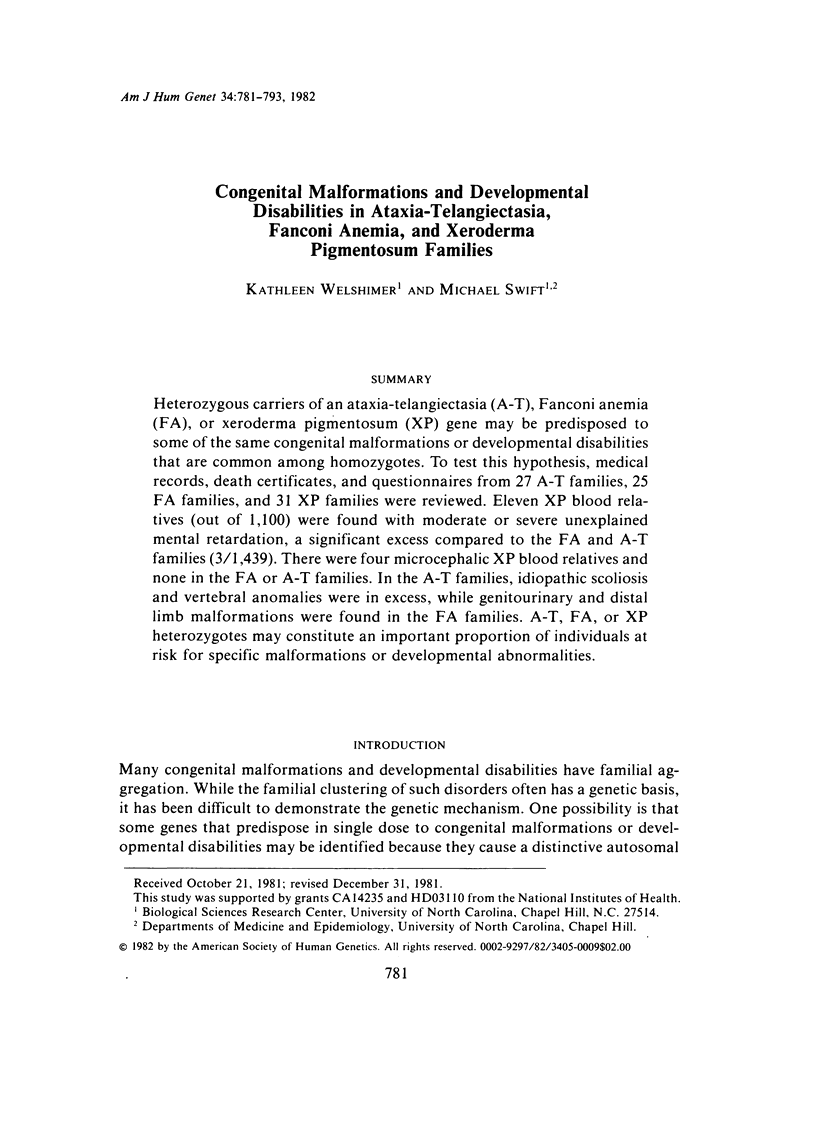
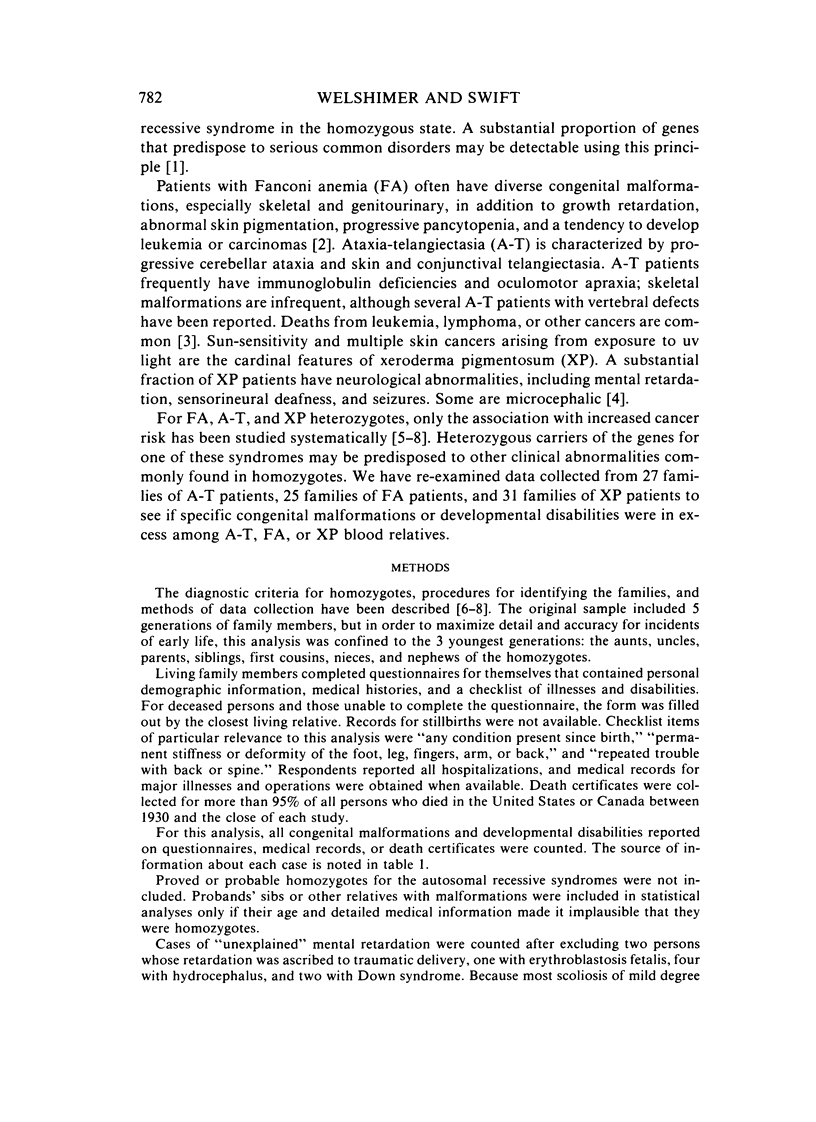
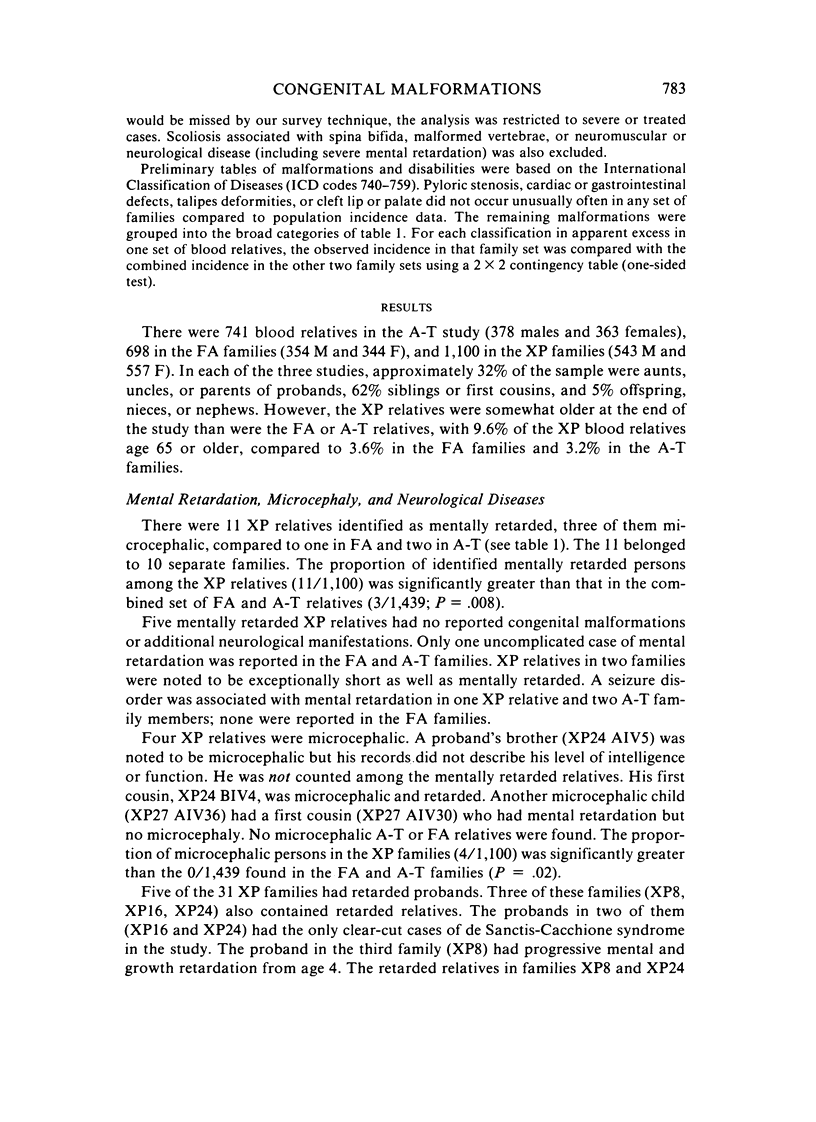
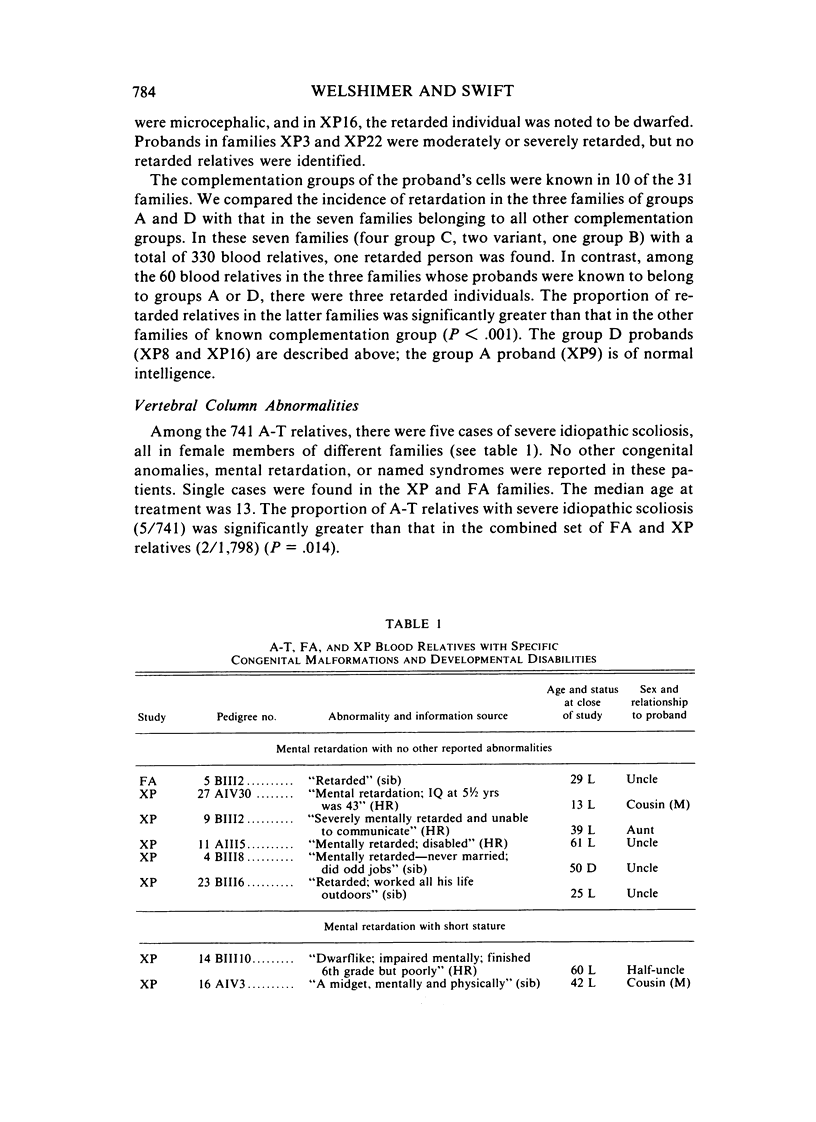
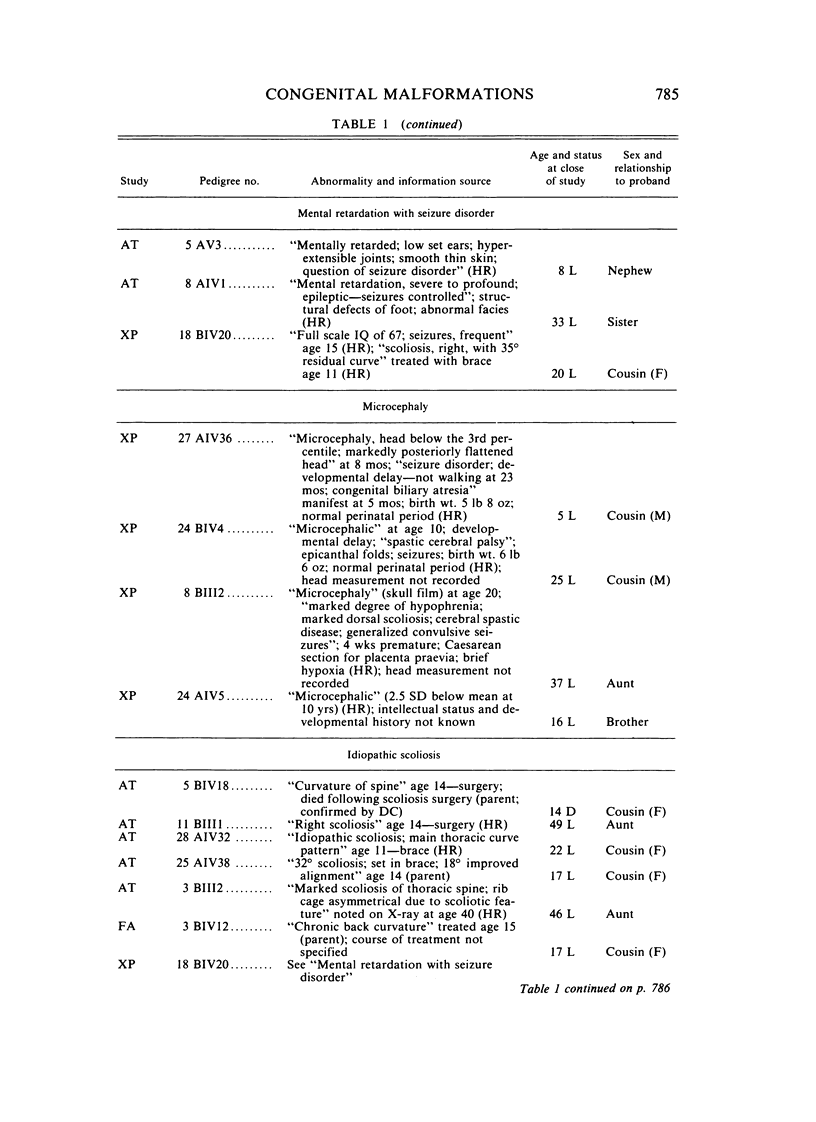
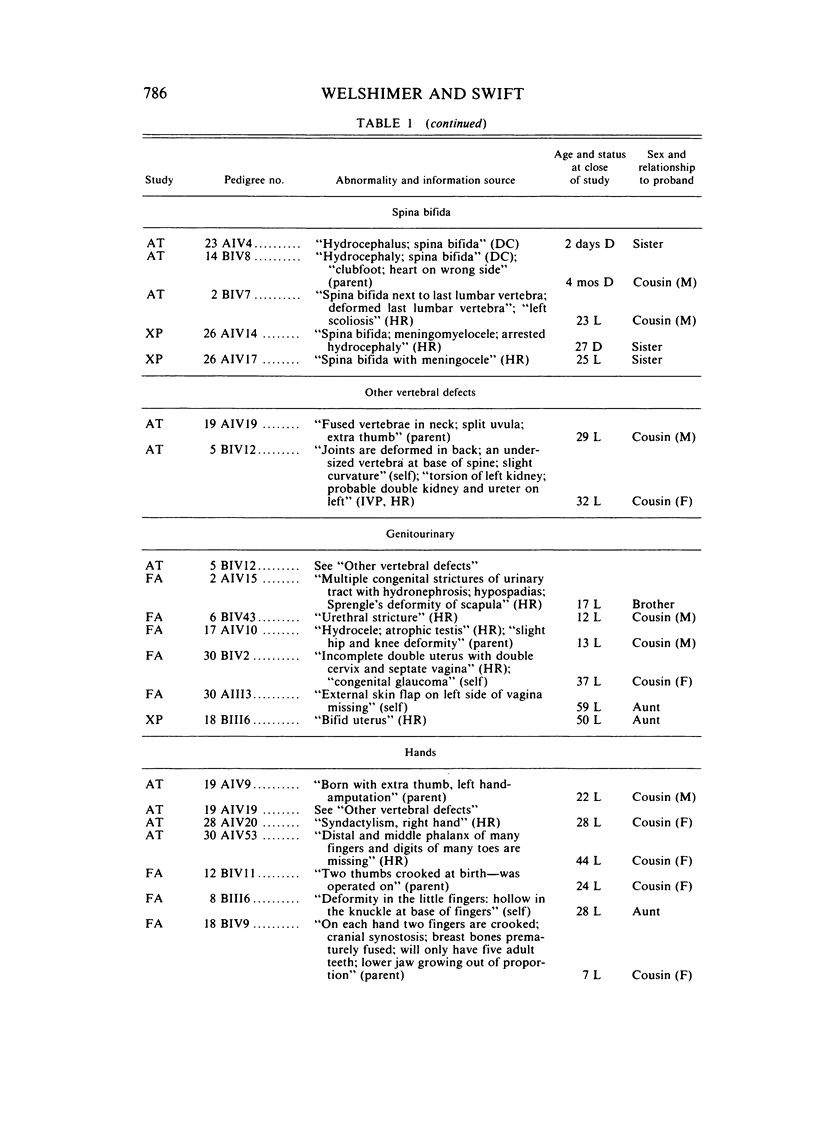
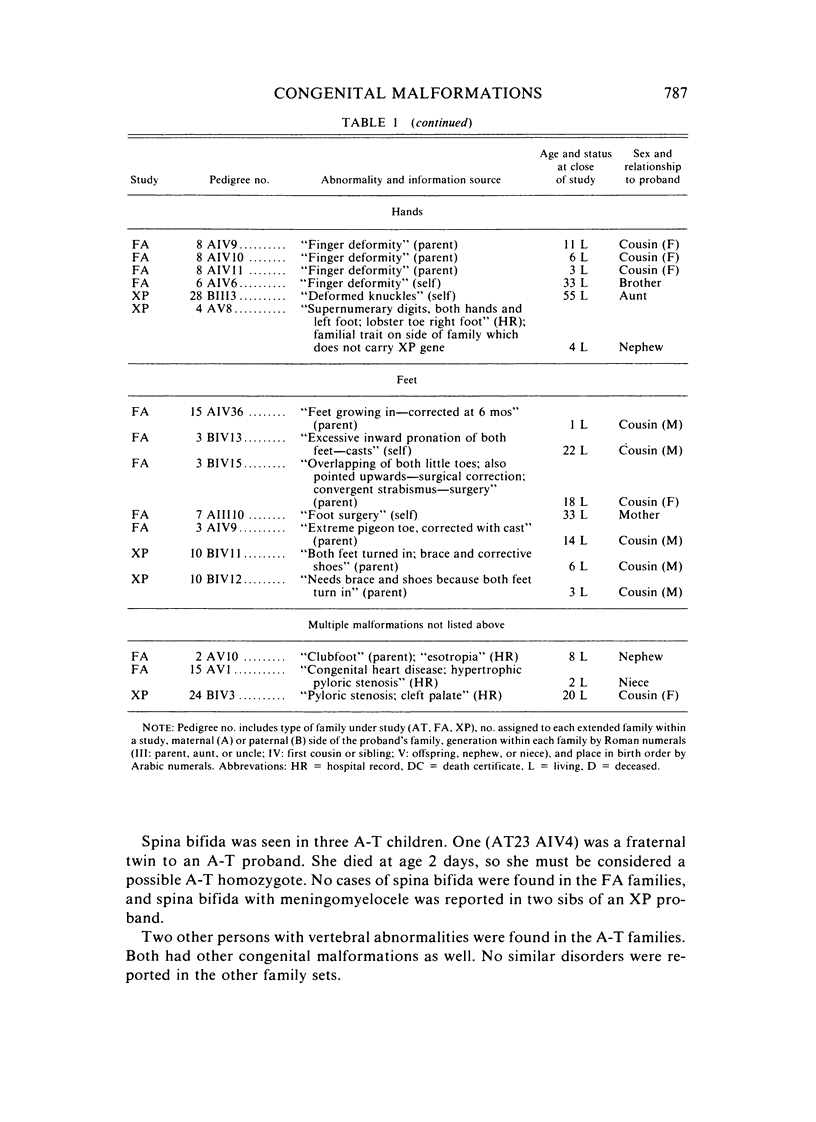
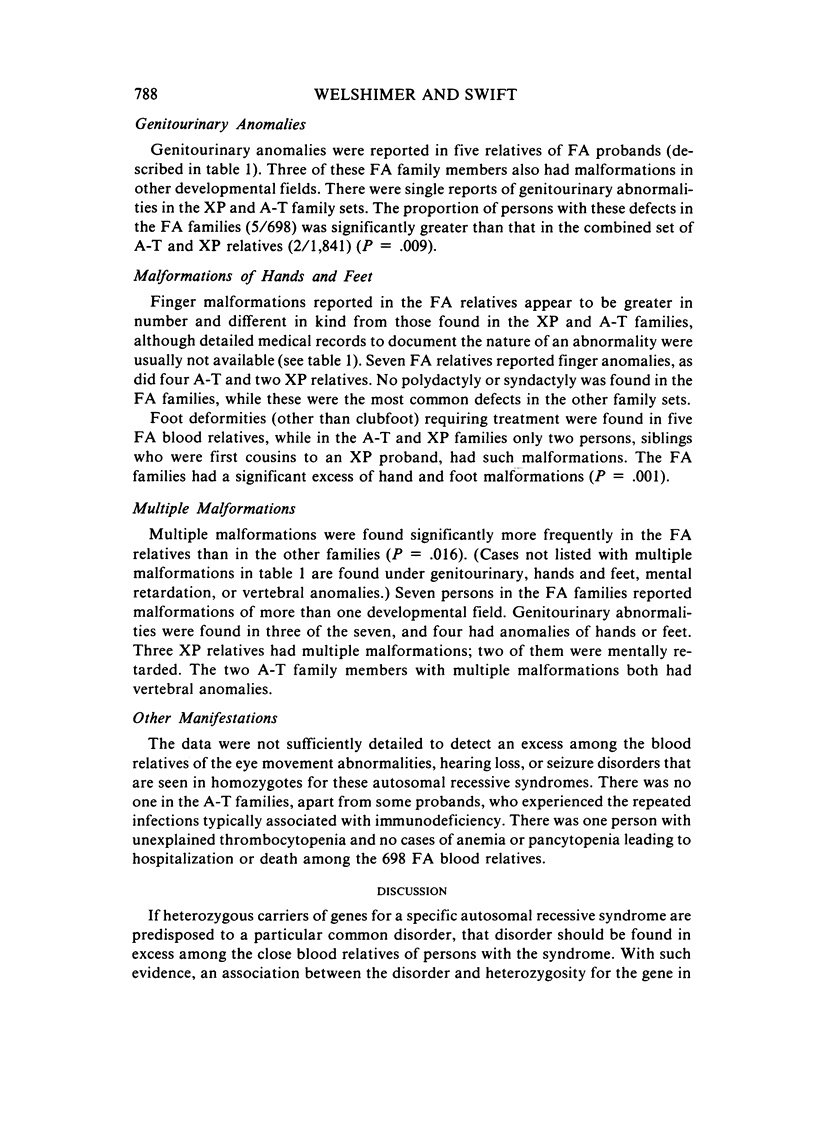
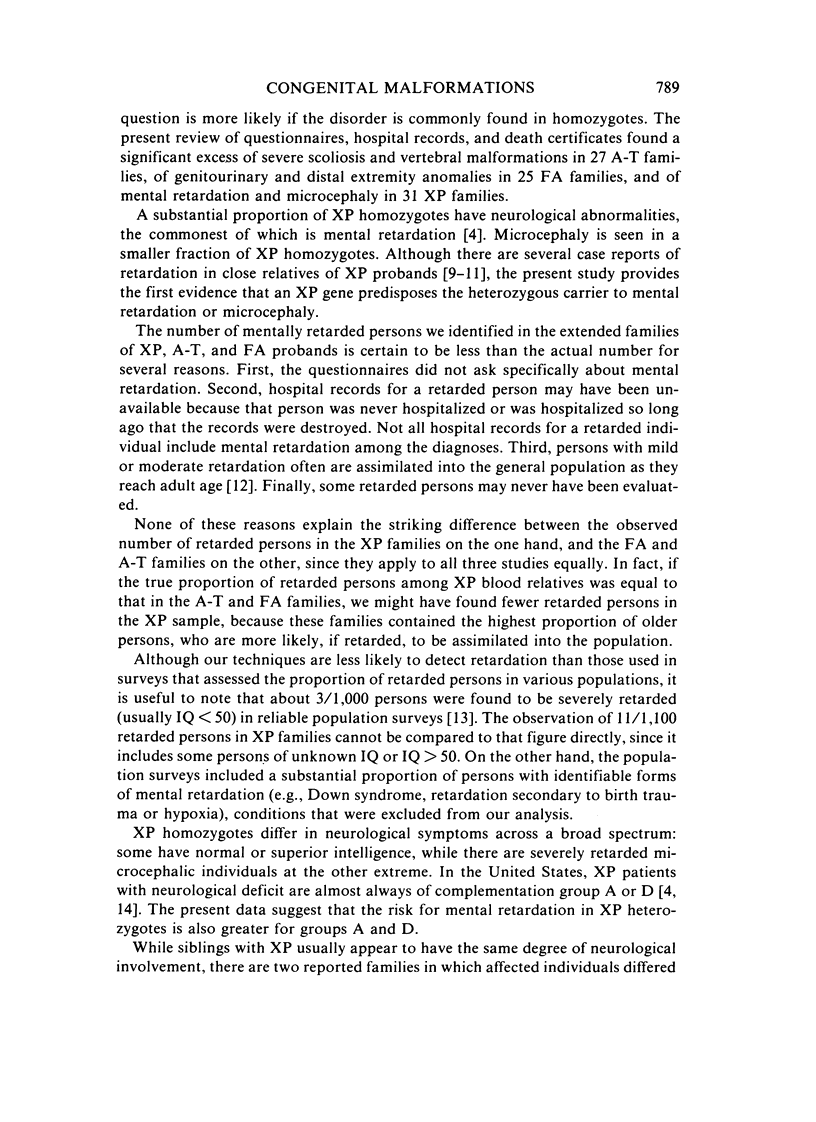
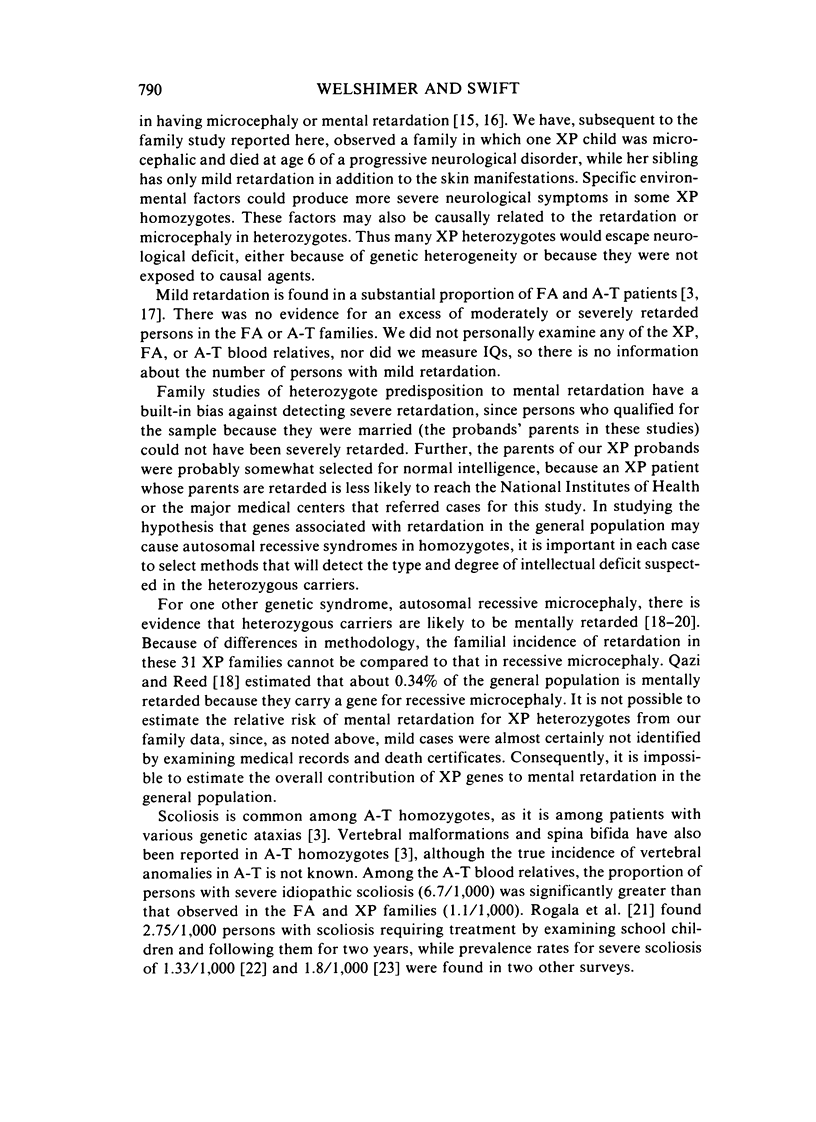
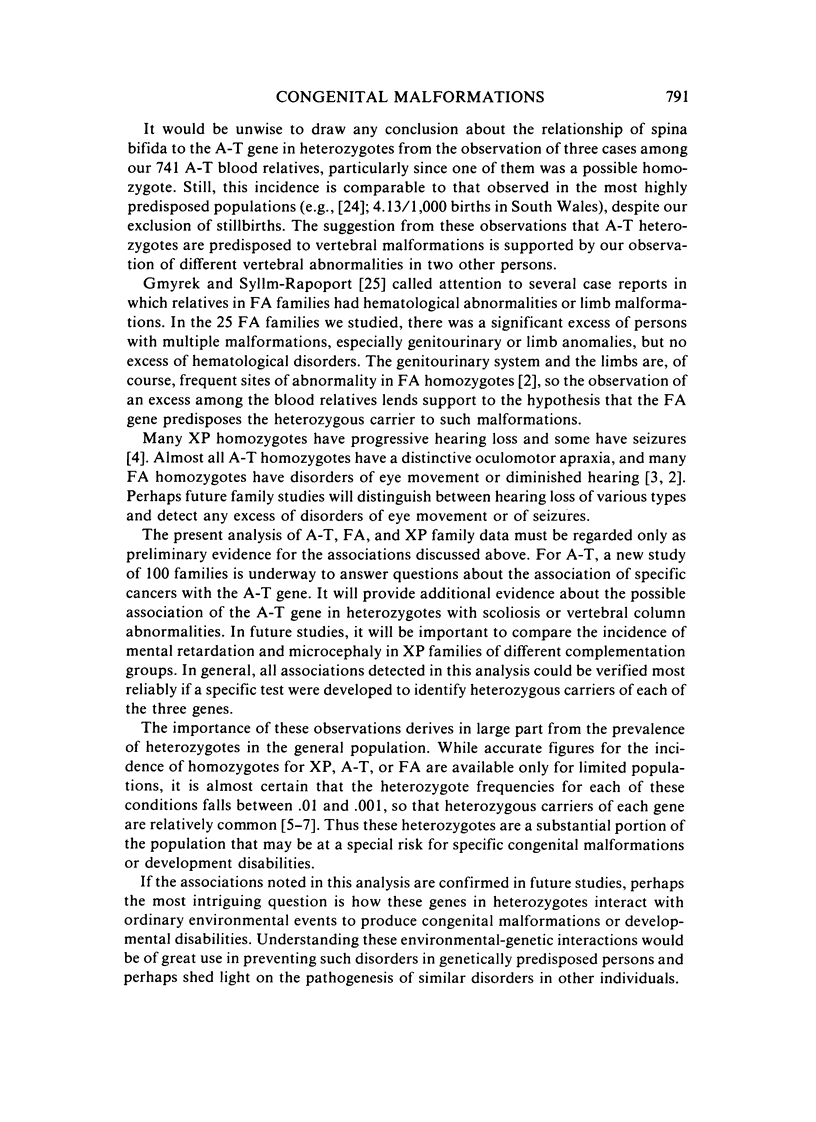
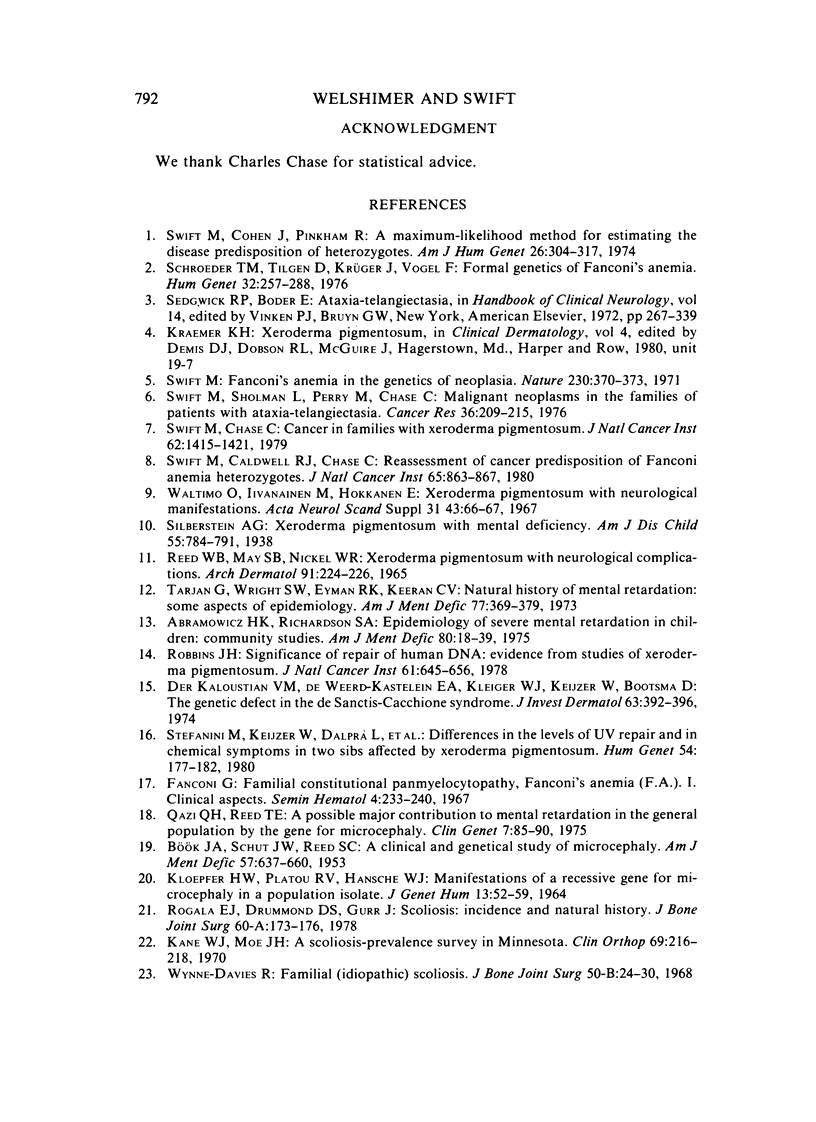
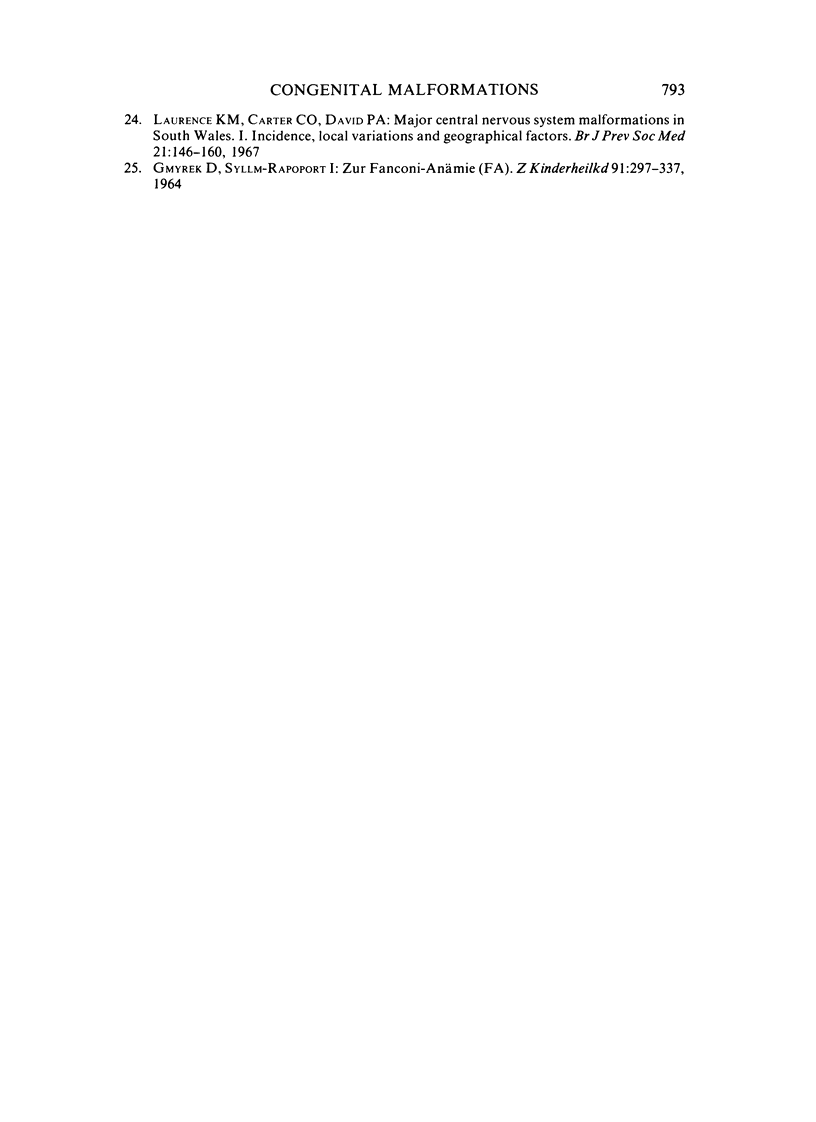
Selected References
These references are in PubMed. This may not be the complete list of references from this article.
- Abramowicz H. K., Richardson S. A. Epidemiology of severe mental retardation in children: community studies. Am J Ment Defic. 1975 Jul;80(1):18–39. [PubMed] [Google Scholar]
- BOOK J. A., SCHUT J. W., REED S. C. A clinical and genetical study of microcephaly. Am J Ment Defic. 1953 Apr;57(4):637–660. [PubMed] [Google Scholar]
- Der Kaloustian V. M., de Weerd-Kastelein EA+DEWEERDAAKATELEIN E. A., Kleijer W. J., Keijzer W., Bootsma D. The genetic defect in the de Sanctis-Cacchione syndrome. J Invest Dermatol. 1974 Nov;63(5):392–396. doi: 10.1111/1523-1747.ep12676556. [DOI] [PubMed] [Google Scholar]
- Fanconi G. Familial constitutional panmyelocytopathy, Fanconi's anemia (F.A.). I. Clinical aspects. Semin Hematol. 1967 Jul;4(3):233–240. [PubMed] [Google Scholar]
- GMYREK D., SYLLM-RAPOPORT I. ZUR FANCONI-ANAEMIE (FA). ANALYSE VON 129 BESCHRIEBENEN FAELLEN. Z Kinderheilkd. 1964 Dec 1;91:297–337. [PubMed] [Google Scholar]
- KLOEPFER H. W., PLATOU R. V., HANSCHE W. J. MANIFESTATIONS OF A RECESSIVE GENE FOR MICROCEPHALY IN A POPULATION ISOLATE. J Genet Hum. 1964;13:52–59. [PubMed] [Google Scholar]
- Kane W. J., Moe J. H. A scoliosis-prevalence survey in Minnesota. Clin Orthop Relat Res. 1970 Mar-Apr;69:216–218. [PubMed] [Google Scholar]
- Qazi Q. H., Reed T. E. A possible major contribution to mental retardation in the general population by the gene for microcephaly. Clin Genet. 1975 Feb;7(2):85–90. doi: 10.1111/j.1399-0004.1975.tb00302.x. [DOI] [PubMed] [Google Scholar]
- REED W. B., MARY S. B., NICKEL W. R. XERODERMA PIGMENTOSUM WITH NEUROLOGICAL COMPLICATIONS: THE DE SANCTIS-CACCHIONE SYNDROME. Arch Dermatol. 1965 Mar;91:224–226. doi: 10.1001/archderm.1965.01600090032005. [DOI] [PubMed] [Google Scholar]
- Robbins J. H. Significance of repair of human DNA: evidence from studies of xeroderma pigmentosum. J Natl Cancer Inst. 1978 Sep;61(3):645–656. [PubMed] [Google Scholar]
- Rogala E. J., Drummond D. S., Gurr J. Scoliosis: incidence and natural history. A prospective epidemiological study. J Bone Joint Surg Am. 1978 Mar;60(2):173–176. [PubMed] [Google Scholar]
- Schroeder T. M., Tilgen D., Krüger J., Vogel F. Formal genetics of Fanconi's anemia. Hum Genet. 1976 Jun 29;32(3):257–288. doi: 10.1007/BF00295817. [DOI] [PubMed] [Google Scholar]
- Stefanini M., Keijzer W., Dalprà L., Elli R., Porro M. N., Nicoletti B., Nuzzo F. Differences in the levels of UV repair and in clinical symptoms in two sibs affected by xeroderma pigmentosum. Hum Genet. 1980;54(2):177–182. doi: 10.1007/BF00278968. [DOI] [PubMed] [Google Scholar]
- Swift M., Caldwell R. J., Chase C. Reassessment of cancer predisposition of Fanconi anemia heterozygotes. J Natl Cancer Inst. 1980 Nov;65(5):863–867. [PubMed] [Google Scholar]
- Swift M., Chase C. Cancer in families with xeroderma pigmentosum. J Natl Cancer Inst. 1979 Jun;62(6):1415–1421. [PubMed] [Google Scholar]
- Swift M., Cohen J., Pinkham R. A maximum-likelihood method for estimating the disease predisposition of heterozygotes. Am J Hum Genet. 1974 May;26(3):304–317. [PMC free article] [PubMed] [Google Scholar]
- Swift M. Fanconi's anaemia in the genetics of neoplasia. Nature. 1971 Apr 9;230(5293):370–373. doi: 10.1038/230370a0. [DOI] [PubMed] [Google Scholar]
- Swift M., Sholman L., Perry M., Chase C. Malignant neoplasms in the families of patients with ataxia-telangiectasia. Cancer Res. 1976 Jan;36(1):209–215. [PubMed] [Google Scholar]
- Tarjan G., Wright S. W., Eyman R. K., Keeran C. V. Natural history of mental retardation: some aspects of epidemiology. Am J Ment Defic. 1973 Jan;77(4):369–379. [PubMed] [Google Scholar]
- Wynne-Davies R. Familial (idiopathic) scoliosis. A family survey. J Bone Joint Surg Br. 1968 Feb;50(1):24–30. [PubMed] [Google Scholar]


